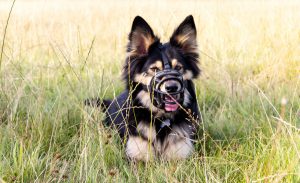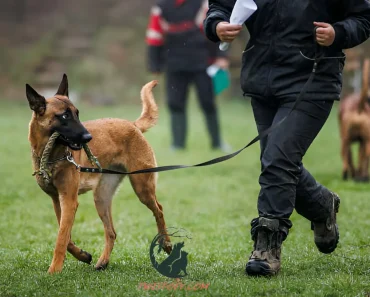In the vast tapestry of human-canine relationships, warning dogs stand as vigilant sentinels, guarding against potential dangers and providing invaluable assistance to individuals with various needs. From guiding the visually impaired to detecting seizures or alerting to impending medical crises, these remarkable animals serve as both companions and protectors. This article delves into the diverse roles and significance of warning dogs in today’s world.

Warning Dogs
Understanding Warning Dogs:
There are several types of warning dogs, each trained to assist individuals with specific disabilities or needs. Here are some common types:
- Hearing Dogs: These dogs are trained to assist individuals who are deaf or hard of hearing. They alert their owners to important sounds such as doorbells, smoke alarms, alarms clocks, and approaching vehicles.
- Seizure Alert Dogs: These dogs are trained to recognize the signs of an impending seizure in their owners and provide assistance during and after the seizure. They may alert their owner, fetch medication or a phone, or provide comfort during the episode.
- Diabetic Alert Dogs: Trained to detect changes in blood sugar levels, these dogs can alert individuals with diabetes to dangerous highs or lows, allowing them to take necessary actions to manage their condition.
- Allergy Alert Dogs: Individuals with severe allergies, especially to foods or environmental triggers, may benefit from allergy alert dogs. These dogs are trained to detect allergens and alert their owners to their presence, helping to prevent exposure and potential allergic reactions.
- Mobility Assistance Dogs: While not specifically “warning” dogs, these dogs assist individuals with mobility impairments by retrieving items, opening doors, and providing stability and support while walking.
- Psychiatric Service Dogs: These dogs assist individuals with psychiatric disabilities such as PTSD, anxiety disorders, or depression. While they may not provide warning alerts in the traditional sense, they are trained to perform tasks that mitigate the effects of their owner’s disability, such as providing deep pressure therapy during panic attacks or interrupting harmful behaviors.
These are just a few examples of the types of warning dogs available, and there may be others tailored to specific needs or disabilities. Each type of warning dog undergoes specialized training to meet the unique requirements of their owner and the tasks they are expected to perform.

Warning Dogs
The Impact of Warning Dogs:
Warning dogs have a profound impact on the lives of individuals with disabilities by providing practical assistance, emotional support, and increased independence. Here are some ways in which warning dogs make a difference:
- Increased Safety: Warning dogs help individuals with disabilities navigate their environments safely. For example, hearing dogs alert their owners to important sounds such as alarms, sirens, or approaching vehicles, reducing the risk of accidents.
- Enhanced Independence: With the assistance of warning dogs, individuals with disabilities can perform tasks they might otherwise struggle with. For instance, mobility assistance dogs can help their owners retrieve dropped items, open doors, or navigate through crowded spaces independently.
- Improved Quality of Life: Warning dogs not only provide practical assistance but also offer companionship and emotional support. They can help reduce feelings of loneliness and isolation, boost morale, and provide a sense of security to their owners.
- Early Detection and Intervention: Dogs trained to detect medical emergencies, such as seizures or changes in blood sugar levels, can provide early warning signs, allowing their owners to take necessary precautions or seek medical help promptly.
- Social Facilitation: Warning dogs often serve as conversation starters and icebreakers in social situations, helping their owners feel more comfortable and confident in social settings. This can lead to increased social interactions and a broader support network.
- Increased Confidence and Self-Esteem: Knowing that they have a loyal and capable companion by their side, individuals with warning dogs often experience a boost in confidence and self-esteem. They may feel more empowered to engage in activities they might have avoided previously.
- Peace of Mind for Caregivers: For family members or caregivers of individuals with disabilities, warning dogs provide peace of mind knowing that their loved ones have an additional layer of support and protection, especially when they cannot be present.
Overall, warning dogs play a vital role in enhancing the overall well-being and quality of life for individuals with disabilities, empowering them to live more independently and confidently.
Challenges and Considerations:
While warning dogs offer numerous benefits, there are also challenges and considerations to be mindful of:
- Training and Maintenance Costs: Training a warning dog requires time, resources, and expertise. Additionally, ongoing maintenance costs, including veterinary care, food, and supplies, can be significant.
- Access Rights and Legal Considerations: Despite their valuable assistance, warning dogs may face access challenges in certain public places or housing situations due to legal or policy limitations. Ensuring awareness of and compliance with relevant laws, such as the Americans with Disabilities Act (ADA), is essential.
- Public Perception and Education: Some individuals may not understand the role of warning dogs or may be unfamiliar with etiquette around interacting with service animals. Public education efforts are necessary to promote awareness and respect for the rights of individuals with warning dogs.
- Matching Process: Matching the right warning dog with an individual’s specific needs and lifestyle requires careful consideration and may involve a waiting period. Factors such as temperament, training, and compatibility with the owner’s disability must be taken into account.
- Care and Responsibility: Owning a warning dog entails a lifelong commitment to their care, training, and well-being. Individuals must be prepared for the responsibilities of dog ownership, including exercise, grooming, and regular veterinary visits.
- Potential Health Risks: Some individuals with disabilities may have compromised immune systems or allergies that could be exacerbated by close contact with animals. It’s essential to consider any potential health risks and take appropriate precautions.
- Training and Behavior Challenges: While warning dogs undergo extensive training, they are still animals and may exhibit occasional behavioral issues or require ongoing reinforcement of their training. Owners must be prepared to address these challenges and provide consistent guidance.
- Transition Period: Adjusting to life with a warning dog may require a transition period for both the owner and the dog. Patience, consistency, and clear communication are key during this adjustment phase.

Warning Dogs
Despite these challenges, the benefits of having a warning dog often outweigh the difficulties, providing individuals with disabilities with invaluable support, companionship, and independence.
Warning dogs play a multifaceted role in today’s world, serving as loyal companions, skilled assistants, and steadfast guardians. Whether guiding individuals with disabilities, detecting medical emergencies, or providing security and comfort, these remarkable animals enrich the lives of those they serve and exemplify the profound bond between humans and dogs. By recognizing their importance and supporting their inclusion, we can create a more inclusive and compassionate society for all.






